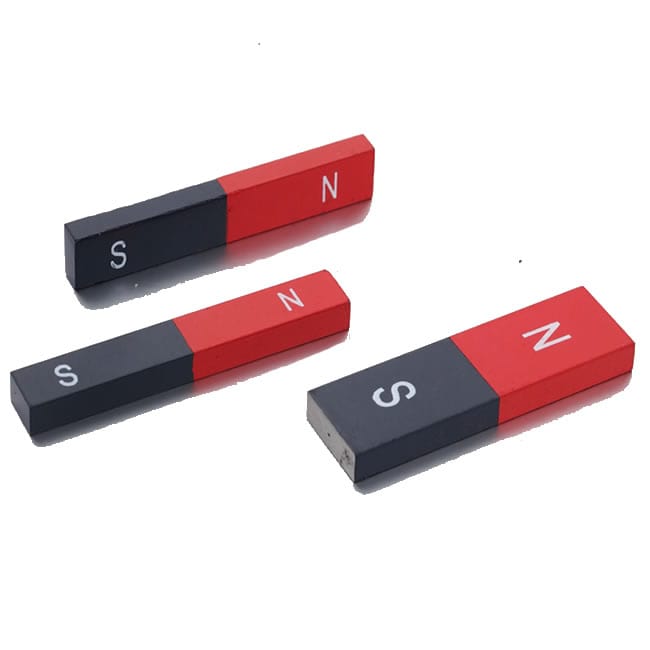What are Alnico Magnets?

Alnico magnets are one of the strongest permanent magnets. The magnetic field produced at their poles is about 3000 times the strength of Earth’s field. These magnets have a low temperature coefficient and are widely used in many industries that require using high temperatures, operating special equipment, and precision machinery.
Alnico magnets are made of metals like aluminum, nickel, and cobalt. However, they may also be made of copper, iron, and titanium. The magnetic quality of the Alnico compounds begins by a stage partition in the cast amalgam into ferromagnetic FeCo-rich and NiAl-rich stages catalyzed by the high-temperature homogeneous synthesis.
The accurate composition of an alnico magnet depends on the required strength of the magnet. They may be manufactured using a sintering or casting method; the latter method ensures greater mass and density of the magnet which means greater magnetic resonance and traits. However, the sintering method is an easier, quicker, and cheaper way to produce alnico magnets.
Sintered alnico though has poorer magnetism, it has far superior mechanical traits than cast alnico.
Alnico magnets made by casting require melting of alloys at high temperatures and then pouring the molten mixture into a cast and further processing it in different heat requiring processes. The result is an alnico magnet which is graphite-colored and has a rough surface. Magnets made using a machine are buffed to give them a smooth and shiny appearance. Sintered magnets are made by a mix of fine alnico powder in a press and then heated to melt them without liquefaction. The molten powder is then made into magnet form.
Even though alnico magnets may be fun to play with, they may also be equally hazardous. If you were to place two small pieces of their kind of magnets together, owing to the sheer strength of their magnetism, the two pieces would jolt with great ferocity, and risk being chipped, cracked, or flying off and injuring someone. The chipped pieces may be quite sharp and further open injuries. If they come in range of children and are swallowed, they may prove to be fatal due to potential toxicity and obstruction, leading to severe inflammation of the gastrointestinal tract. If bigger sized alnico magnets were to come into contact while someone’s hand or finger is ill-fatedly placed, they have the tremendous strength to blister and potentially crush their body parts. Thus, they must be handled with great caution.
Alnico magnets are either isotropic or anisotropic meaning that the directions of their magnetization abilities can be controlled. Isotropic magnets are free-range magnets whilst the magnetic field of an anisotropic magnet must be pre-set, however, they are better performing. Alnico magnets have a high magnetic flux density. They are also highly resistant to wear and tear and have immense endurance to high temperatures. They may even be plated to make them more aesthetically pleasing. Alnico magnets have a wide array of applications that include, but are not limited to use, in manufacturing microphones, electric guitars, motors, speakers, and travelling-wave tubes.
